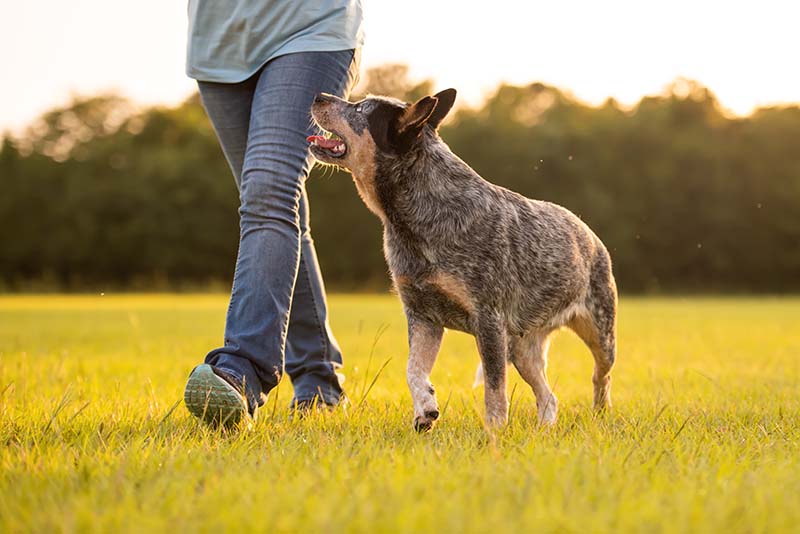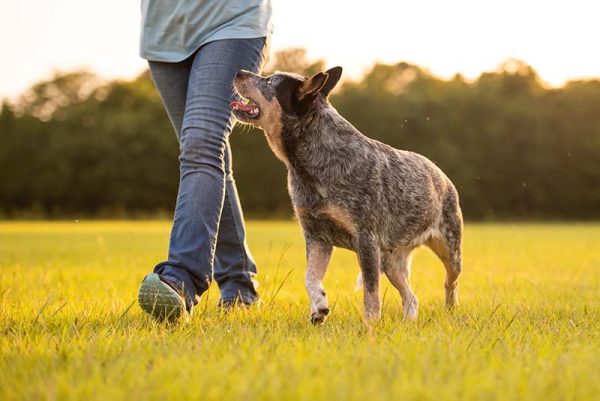One of the most beautiful aspects of the human-canine relationship is the loyalty and love our dogs have for us. Despite this, it is essential to teach your dog to have a minimum of independence. Indeed, an extreme attachment can be harmful to the animal and to its owner. Does your dog follow you everywhere? Find out the six reasons he does this and what you can do about it.
The 6 Reasons Your Dog Follows You Everywhere
1. They See You as the Leader of His Pack
Dogs are descendants of wolves and are, therefore, used to living in groups. Their life in your family is organized like in a pack, following a particular hierarchy: they normally occupy the last position of the pack, and the head of the family takes the place of the dominant alpha. It is the latter who leads the group and ensures its survival.
So, if your dog sticks to you all the time, it may be because they see you as the leader of the pack—their alpha—and your presence reassures them. They know that thanks to you, they can be satisfied and that they are safe by your side. And also, they love you, of course!
2. They Want to Protect Their Territory
A dog well settled in their home may think they have to fight to keep their privileges. Therefore, they will follow their owner everywhere to make sure they can defend their territory in an encounter with another dog.
The dog is a faithful animal. They wouldn’t leave their place for the world and intend to let it be known!
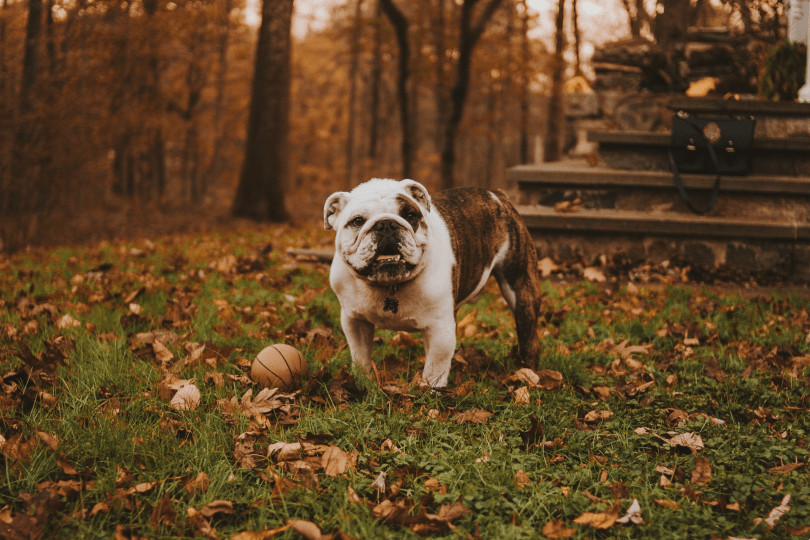
3. They Are Still a Puppy
Puppies tend to follow their new owner everywhere. This behavior is called imprinting. According to expert ethologist Konrad Lorenz, imprinting occurs when a bird attaches itself to the first thing it sees when it hatches. This is why baby geese followed him everywhere if he was the first “object” they saw when they were born.
The same behavior can be applied to puppies, although you probably won’t be the first thing they see after birth. However, the younger your puppy, the more likely they will imprint on you and follow you like your shadow.
4. They Are a Real Velcro Dog
Some breeds, especially those that have been bred for centuries to work with people, are more likely to stick by your side all the time. Here is a short list of purebred dogs known to be just like Velcro:
- Hungarian Vizsla
- Golden Retriever
- Labrador Retriever
- English Bulldog
- Dalmatian
- Dachshund
- German Shepherd
- Pug
- Yorkshire Terrier
- Boxer
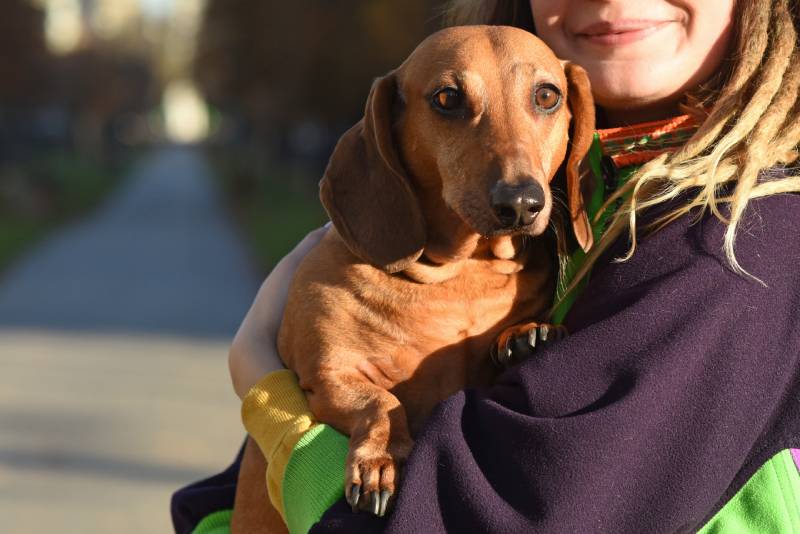
5. They Come From a Shelter
Rescuing a dog from a shelter is a wonderful opportunity to give a desperate animal the chance to live in a loving new home. However, a dog coming from these places can sometimes be traumatized, especially if its previous owner has abandoned them. As a result, they can exhibit certain behavioral issues, including excessive attachment to their new owner. Indeed, they will tend to follow their humans everywhere since the fear of being abandoned again is still very present.
6. They Suffers From Separation Anxiety
Separation anxiety is a behavioral disorder in dogs that manifests as a state of distress when the animal becomes separated from the person to whom it is excessively attached. Thus, dogs that are overly attached to their owner are usually very anxious about the separation. So, as soon as you go to work or anywhere without your dog, they feel terrible. And when you finally come back home, your dog can’t find another way to communicate their stress to you and follow you everywhere. Besides, this canine behavior is prevalent among those who have been abandoned and then adopted by a new owner.
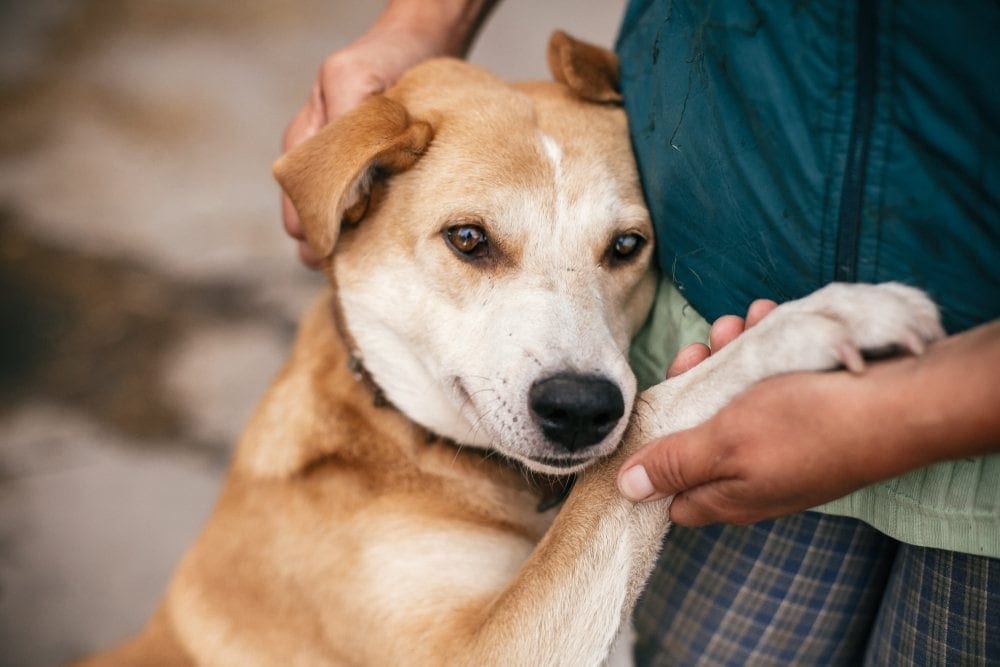
What Can You Do to Help Your Dog Be More Independent?
1. If Your Dog Is Still a Puppy
Usually, it is easier to correct this behavior problem while your dog is still young. We must therefore act quickly, if possible, upon adoption. Even if they don’t realize it, owners of young dogs sometimes get them used to following by unknowingly adopting positive reinforcement techniques.
For example, when a puppy follows its owner to the toilet and the owner has a positive emotion like laughing at such “cute” behavior, it prompts the puppy to start over and continue down this path. For this reason, you must encourage your dog to adopt the right habits as soon as they arrive in your home and reinforce their autonomy.
- Make your departures and returns a normal occurrence. That will teach your puppy to be confident in their ability to be alone. For example, take a shower, take a mini walk in your backyard, or do something else to let your pup know that not being with you for a few minutes doesn’t matter. Also, if you give your puppy something delicious to snack on while you’re gone, they may even be eager to see you go!
- Progress gradually. Start by leaving your puppy alone for 5 minutes and then gradually go away for 10, then 30 minutes, until he agrees without flinching to be alone for an hour. However, be careful not to go too fast.
- Use toys or other distractions. Leave your puppy in a safe place, where they feel good and with something to occupy while you are away. Use a Kong-type toy filled with mouth-watering food, leave the television on, and plug in the radio; your puppy will then feel more reassured.
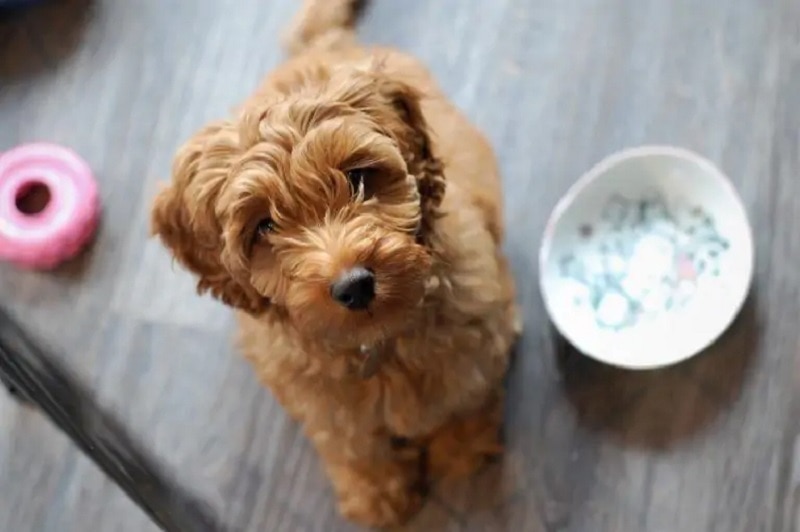
2. If Your Dog Is an Adult
To begin with, you must put an end to the various rituals you may have put in place with him when you leave or arrive at your home. Thus, it will play down the situation for your dog and possibly mark the beginning of their independence. It is also recommended to close the doors from time to time so that your dog does not follow you into a room and understands that they should not follow you to every corner of the house. As you go, you may try to order your dog to go to their bed or remain seated rather than close the doors.
However, be careful not to rush your dog around so that they stop following you around. Indeed, it will take more or less time, depending on the age and habits of your pooch.
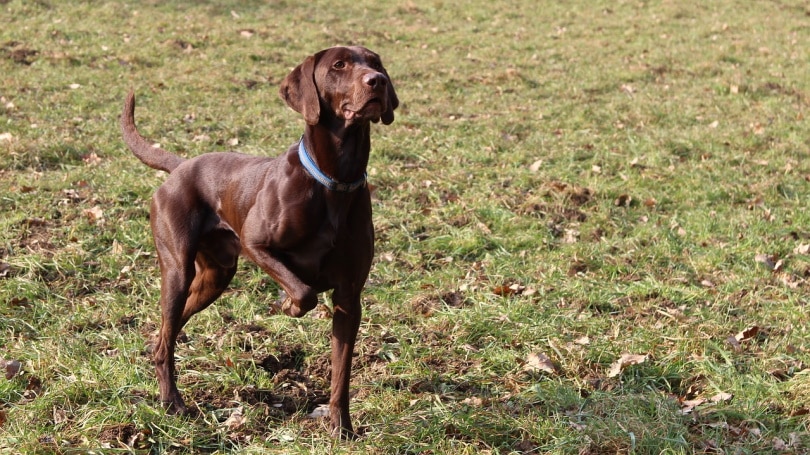
What You Shouldn’t Do if Your Dog Has Separation Anxiety
- Go away without your dog realizing it. In doing so, you are “lying” to your dog, and like in any relationship, lies break trust. This may also increase your dog’s over-vigilance.
- Get angry when you come home or punish your dog. Remember that your dog can have a panic attack and lose control when you are away. Threatening them will only increase their stress, as they may associate your return with a negative emotion like fear. They won’t understand your anger either.
- Adopt another dog. This is a double-edged sword, as you can end up with no longer one but two dogs suffering from anxiety, plus it doesn’t guarantee that it will help your already suffering companion.
- Leave your dog alone longer than they can handle. It will be impossible to learn to cope well if the dog’s tolerance threshold is never respected.
- Use an anti-bark collar (such as citronella collar, electric, or vibration collar). Hiding a sign doesn’t cure anxiety. In addition, your dog is at risk of self-harm.
Final Thought
If your dog is following you like a second shadow, that’s not necessarily a bad thing. It could simply be because they have a strong attachment to you! Besides, if they are calm and do not destroy the whole house when you leave them alone for a few hours, the fact that they follow you everywhere is probably not a problem.
On the other hand, this behavior can become problematic in some dogs and depends mainly on factors such as age, breed, antecedents (whether it was adopted or not), and training. In any case, if your dog’s separation anxiety is extreme, you should consult a veterinarian or canine behavior expert, who can guide you toward the best approach to solving this problem.
You may also want to read:
- Why Do Dogs Like to Sleep Curled Up? Here’s the Answer!
- Do Dogs Like Being Picked Up or Held? What You Need to Know!
Featured Image Credit: Tanya Consaul Photography, Shutterstock
Contents
- The 6 Reasons Your Dog Follows You Everywhere
- 1. They See You as the Leader of His Pack
- 2. They Want to Protect Their Territory
- 3. They Are Still a Puppy
- 4. They Are a Real Velcro Dog
- 5. They Come From a Shelter
- 6. They Suffers From Separation Anxiety
- What Can You Do to Help Your Dog Be More Independent?
- What You Shouldn’t Do if Your Dog Has Separation Anxiety
- Final Thought

